Dangerous Nuclear Accidents

Quarantine life has led me to research more and more about everything nuclear, joining a tag on this blog that already has a few posts. It started with research on why we haven't finished a nuclear plant (In the US) since 1990.
Only those alive in the 1960s to 1970s would remember the huge growth of nuclear expansion that was ultimately cancelled before or even during construction. I didn't realize the pure scale of a plant until some explorers on YouTube went visiting the abandoned Hartsville, Tennessee plant.
So what caused nearly 50% of the 253 reactors from 1953 to 2008 to be cancelled in the United States? This is obviously the huge perception change that occurred after a few nuclear accidents, which resulted in the US Nuclear Regulatory Commission expanding the regulations to protect the public health.
The increased delays for licensing pushed costs higher and with the public turning against nuclear - plants were cancelled.
So for this post, lets dig into the worse nuclear accidents and figure out how we classify them.
International Nuclear Event Scale (INES)
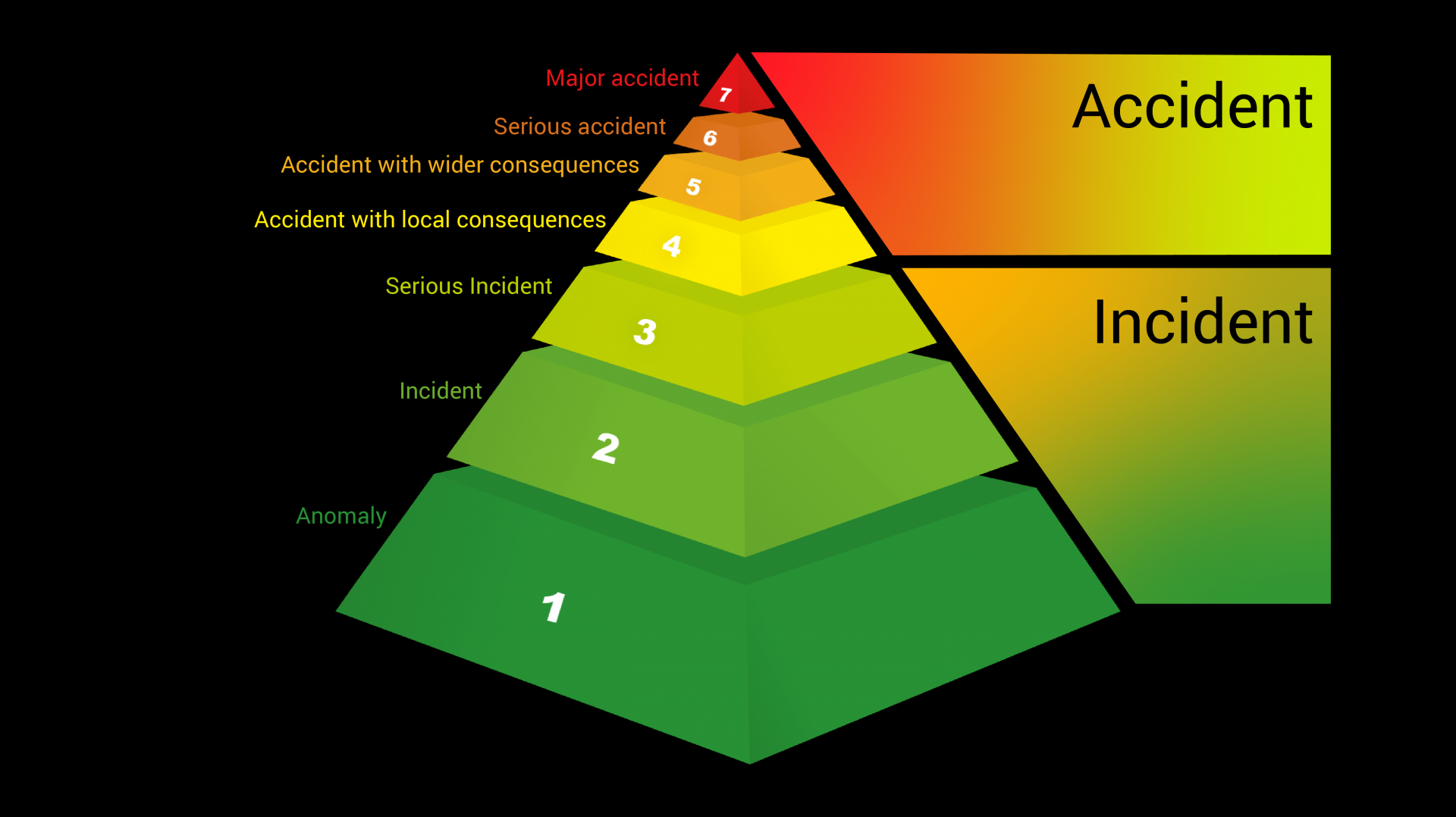
This scale was produced to help communicate the significance of any nuclear event to the world. This is because the general public is not versed in nuclear reactions to completely understand the ramifications of any type of accident.
When you hear about a tornado with 150mph winds most folks can understand the severity of that issue. However, tell someone they just took a dose of 200 rads due to an accident. What does that mean? - I can't tell you because the units of a regular MRI is a different unit than rads and I honestly don't know the conversion.
So lets look at the top accidents and see why some have some debates over the INES scale.
Level 7 - Major Accident
- Chernobyl, USSR (1986)
- Fukushima, Japan (2011)
Level 6 - Serious Accident
- Kyshtym, USSR (1957)
Level 5 - Accident with Wider Consequences
- Sellafield, United Kingdom (1957)
- Harrisburg, Pennsylvania (1979)
- Chalk River, Ontario (1952)
- Goiania, Brazil (1987)
The lower we get the more events that show up, but looking at the top 3 deadly classifications is enough for this blog. So some criticism has begun because another event joined Chernobyl at Level 7 which arguably probably should have its own level to the sheer scale that accident was.
The arguments really root from the fact that the INES scale has an upper limit at 7 which is tough because it naturally causes people to compare/contrast disasters. So this led to the proposed NAMS scale.
Nuclear Accident Magnitude Scale (NAMS)
This scale works off the quantity of radioactivity released into the atmosphere and is graded in the way that each 1.0 jump on the scale correlates to a factor of 10 increase in severity.
This scale really hasn't caught on, but here are known disasters re-rated under NAMS:
- Chernobyl - 8.0
- Three Mile Island - 7.9
- Fukushima - 7.5
- Kyshtym - 7.3
So the Three Mile Island accident, which was a Level 5 on INES, is a 7.9 on NAMS, which is a bit tough to correlate, but can be answered by the peek of the disaster.
This is much like a hurricane which may be CAT5 all the way though the ocean, but right before it makes landfall be downgraded to CAT4. The reports after the fact will call it a CAT5 (for the peek), but for the majority of land travel it was not a CAT5.
So now lets peek at a few of the most dangerous nuclear accidents.
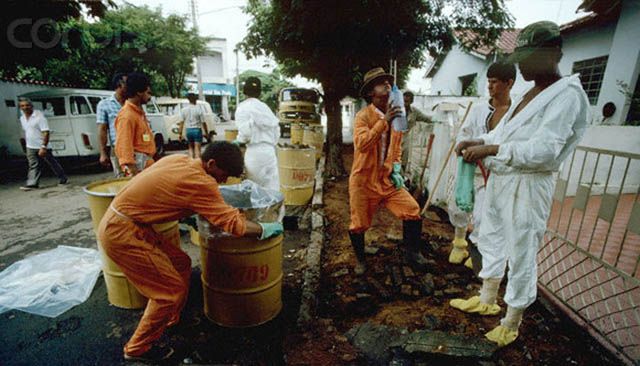
Goiania Accident, Brazil 1987 - Level 5 INES
This is classified as an accident, but is really a theft gone wrong. An abandoned hospital was looted and some radioactive source (caesium chloride) was stolen as the unique glow it emitted was cool. It was passed and traded among many until people started dying and the government intervened.
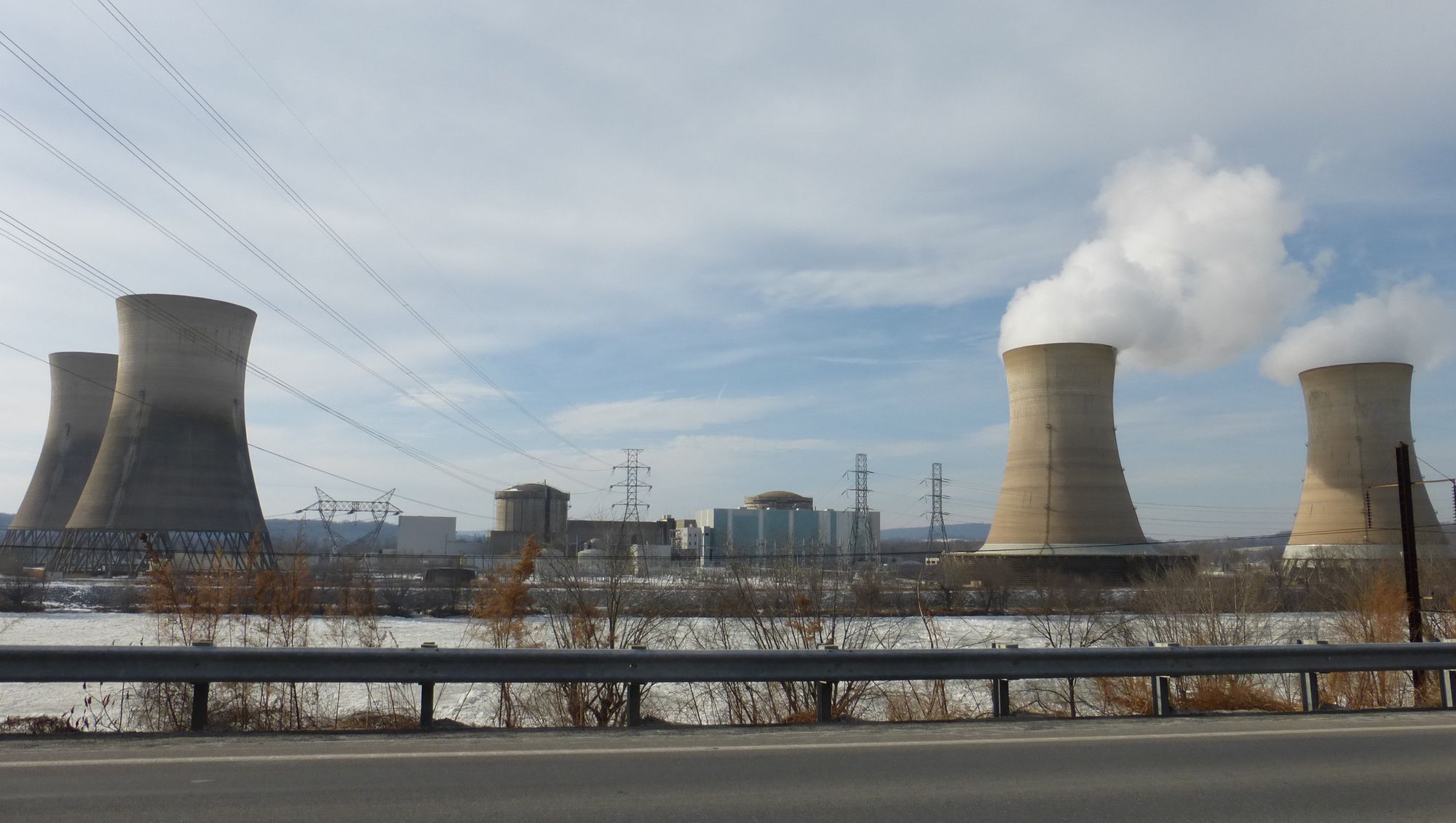
Three Mile Island, Pennsylvania USA - 1979 - Level 5 INES
This was the worse (so far) nuclear accident on United States soil in which a failure in a non-nuclear system caused reactor coolant to leak back through a broken open value into an air line. This caused the pumps to turn off and trigger an automatic emergency shutdown.
As the control rods inserted to halt the reaction, secondary pumps began to cool the decay heat still there, but they stopped working which should have led to the auxiliary pumps to kick in. However, they were all shutdown for maintenance. The story continues with just a chain of events that ultimately resulted in the core overheating and melting inside the inlet leaking radioactive elements into the area.
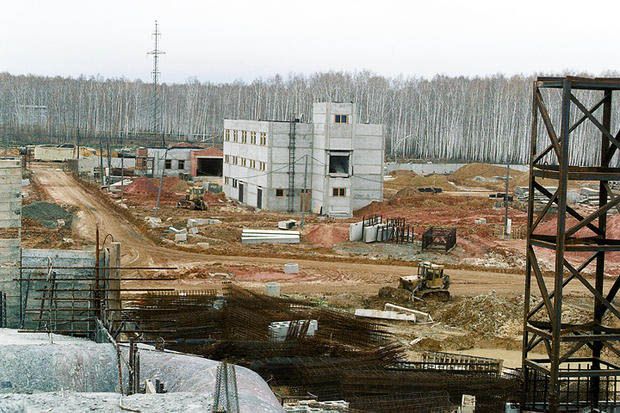
Mayak, Kyshtym, USSR - 1957 - Level 6 INES
A production site in modern day Russia had an issue where a cooling system for radioactive waste went offline and was not repaired. While unknown why it wasn't repaired, the temperature simply rose until an explosion occurred blowing the roof (160 tons of concrete) off the facility.
Due to the shroud of secrecy that resolved around the USSR and nuclear related activities made this really difficult to research even decades layer.

Fukushima, Japan - 2011 - Level 7
The most recent and dangerous accident yet which joined Chernobyl at Level 7 on the INES scale. What was ultimately caused by an earthquake (shutting down the reactor automatically) then tsunami (flooding the generator) caused the temperature to continue to rise.
As heated steam escaped to suppression pools the mixture of gases and water led to explosions in 3 of the reactors. Now cooling methods weren't properly working which led to the remaining water evaporating exposing the fuel and started melting into corium.
Like all nuclear accidents such a large chain of events result in an accident, so this tiny post does not give it justice. For more information, I liked the detail video below.
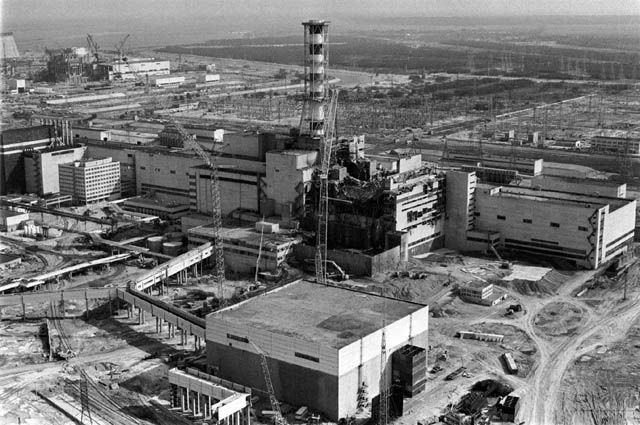
Chernobyl, USSR - 1986 - Level 7
Now we arrive at Chernobyl that everyone knows about. A delayed test (resulting in the reactor running at low power) led to an abundance of "poison" (xenon 135) not being burned off due to low power.
So the reactor when needed to be brought up for the test (it had fallen even further) had the control rods pulled out to effectively increase the power. Details are fuzzy on what happened during the test, but the emergency shutdown was triggered (which is common) to shut down the reactor after the test.
Unfortunately the control rods were tipped with graphite which when began inserting accelerated the reaction process and caused some fractured fuel lines blocking the control rods in a partially inserted position.
The reaction was accelerating now uncontrollably due to the tipped control rods which led to an explosion after the plant registered a power 10 times its maximal operational output. Estimations later on put the explosion at nearly 10 tons of TNT.
Concluding
I wonder if nuclear energy will make a revival with the construction of new plants and reactors in my lifetime. Until then, I will just have to keep researching mistakes of the past.
